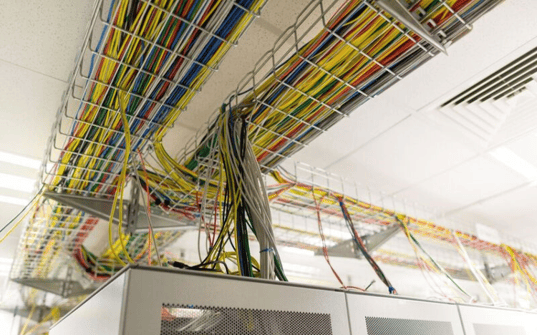From our friends at Sumitomo Electric Lightwave: check it out!
In recent years, the demand for colocation data centers has been increasing due to growth of the “internet of things” and the use of colocation data centers to support a multitude of services such as cloud and mobile connections. Inside a colocation space, a cable management rack supports a large number of cables to create a network connection to the tenants from the Main Point of Entry (MPOE) and between tenants and discrete tenant locations. This may not be a problem in the short term, but in the long term, with continuing changes and expansion to support tenant connectivity, the cable management racks will experience increasing congestion.

One of the biggest challenges of the colocation data center occurs when tenant to tenant connection changes and cable management gets congested. With cable congestions, it is difficult to trouble-shoot for problem cables and it is hard to identify active and inactive cables without disrupting service. There are numerous causes of congestion which include: i) existing tenants need to expand their network to support their business expansion, ii) established tenant-to-tenant interconnections need to be disconnected due to changes in service, and iii) tenant upgrading to Dedicated Tenant Suite (DTS) for larger and more secure network requirements.

In current cable management, inactive cables are left in the cable management rack due to the risk of network disruption in the removal process. However, as the number of inactive fibers increase, so does the number of unoccupied cables leading to more congestion – the cable management situation keeps getting worse!
A colocation data center where the network connection frequently changes and the tenants require a customized network configuration is a great place to use Air Blown Fiber (ABF) solution.
ABF consists of tube cables with multiple pathways and fiber bundles. ABF tube cable types and tube counts are designed to suit different installation environments (e.g. indoor, outdoor, riser, plenum) and network needs (e.g. bandwidth, data volume). Fiber bundles are blown into the tube cable pathway using jetting equipment.
There are many ABF products in this market. Sumitomo Electric Lightwave (SEL)’s FutureFlex ABF solution offers a wide range of tube types, tube counts, fiber counts and fiber bundles. SEL’s FutureFlex ABF is able to install up to 1,728 fibers in one tube cable with 3 easy steps!
Step 1: Create an End-to-End Tube Cable Pathway
Step 2: Select & Install the Fiber Bundle
Step 3: Terminate the Fiber Bundle Units at Demarcation Points
Tune back in next month and we'll dive in deeper with Sumitomo!
In the mean time:



.png?width=58&height=58&name=X_logo_2023_(white).png)
